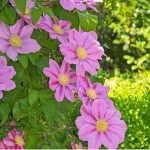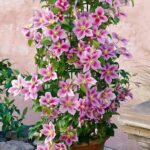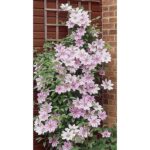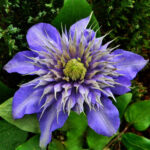Growing colorful vines can add a vibrant and dynamic touch to your garden or outdoor space. These plants not only provide lush greenery but also produce stunning flowers and foliage in a range of hues. Here’s a guide on how to grow colorful vines, covering everything from selection to care.
Choosing the Right Vines
1. Morning Glory (Ipomoea tricolor)
- Color: Blue, purple, pink, red, white.
- Light: Full sun.
- Soil: Well-drained, moderately fertile soil.
- Features: Fast-growing annual with trumpet-shaped flowers.
2. Clematis
- Color: Various, including purple, blue, pink, red, white, and bi-color.
- Light: Full sun to partial shade.
- Soil: Moist, well-drained soil with a neutral to slightly alkaline pH.
- Features: Perennial climber with large, showy flowers.
3. Bougainvillea
- Color: Magenta, purple, red, orange, white, pink.
- Light: Full sun.
- Soil: Well-drained soil; drought-tolerant.
- Features: Vigorous grower with papery bracts that resemble flowers.
4. Honeysuckle (Lonicera)
- Color: Yellow, orange, red, pink, white.
- Light: Full sun to partial shade.
- Soil: Adaptable to various soils but prefers well-drained soil.
- Features: Fragrant flowers attractive to pollinators.
5. Wisteria
- Color: Purple, blue, white, pink.
- Light: Full sun.
- Soil: Moist, well-drained soil.
- Features: Long racemes of fragrant flowers; needs sturdy support.
Planting Tips
Site Selection
Choose a location that matches the light requirements of your chosen vine. Most colorful vines thrive in full sun, but some can tolerate partial shade.
Soil Preparation
- Testing Soil: Test the soil pH and nutrient levels to ensure they match the plant’s needs.
- Amending Soil: Improve soil structure and fertility by adding compost or well-rotted manure.
Planting
- Timing: Plant in spring or early fall to give the vines a good start.
- Spacing: Space plants according to their mature size to prevent overcrowding and ensure good air circulation.
- Support: Install trellises, arbors, or other structures for climbing vines before planting.
Care and Maintenance
Watering
- Consistency: Keep the soil consistently moist, especially for newly planted vines.
- Avoid Overwatering: Ensure good drainage to prevent root rot.
Fertilizing
- Type: Use a balanced, slow-release fertilizer or compost in the spring.
- Frequency: Fertilize during the growing season as needed, based on the plant’s performance.
Pruning
- Timing: Prune at the appropriate time for each species. For example, prune wisteria in late winter and summer.
- Technique: Remove dead or damaged growth and shape the plant to encourage healthy growth and flowering.
Pest and Disease Control
- Monitoring: Regularly check for pests like aphids, spider mites, and caterpillars.
- Treatment: Use insecticidal soap, neem oil, or other appropriate treatments. Ensure good air circulation to prevent fungal diseases.
 careyfashion.com Carey Fashion
careyfashion.com Carey Fashion




















